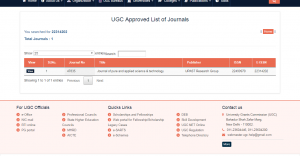Natural Pesticides and Synthesized Pesticides: Comparison and Their Impact on Soil Properties
Smita Chaturvedi and Vinod Kumar
Department of Chemistry, Agra College, Agra, U.P., India.
Email: smitachat15@gmail.com; vinodkchem@gmail.com
Our country mostly depends on our agricultural land, yield and farming. The conservation and quality management of soil is our need, without which any nation cannot survive. It is assumed that the natural pesticides are environmentally friendly and synthetic must have some harmful effect on soil. Di-thiocarbamates were discovered as a class of chemical compounds early in the history of Organo-sulpher chemistry. The strong metal binding properties of dithiocarbonic acid were recognized by Delepine [1], the pioneer worker in this field. Most of the metallic dithiocarbamates except these of alkali/alkaline earth metals, are water soluble. The chelating character of dithiocarbamates complexes are remarkable [2,3,]. The antimicrobial activities of these compounds are remarkable. At present they are produced in various countries in thousands of tones for use in agriculture to control plant diseases [4]. They are effective and some of their metal derivatives are also used as commercial pesticides. But as they are synthetic, they may have some harmful effect on soil as compared to natural pesticides [5,6,7,8,9]. Natural pesticides are environmental friendly [4] and have no harmful residues in soil and the food which grow in the soil. Present piece of work is based on the comparative studies of harmful effect of the chosen synthetic pesticides (the metal derivatives of dithiocarbamates Cu2+, Ni2+, Co2+ etc.) and the natural pesticides like neem oil, Trichoderma and Beauena bassinar, on soil on the basis of the parameters selected such as pH, moisture oxidation-reduction potential, conductivity, total organic concentration, nitrogen, phosphorus, potash and fusarium count (in spores/ml). These selected parameters have been checked at different concentration (ppm) and regular time interval of both type of pesticides by standard methods.
Keywords: Organo-sulpher chemistry, Antimicrobial activities, Natural pesticides, neem oil, Trichoderma, Beauena bassinar.






